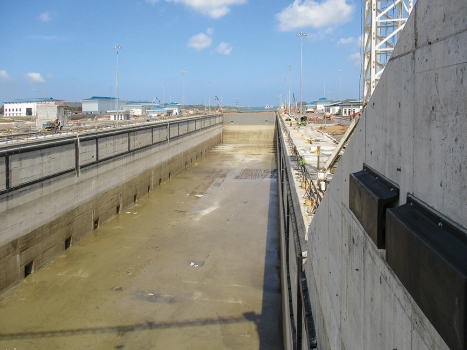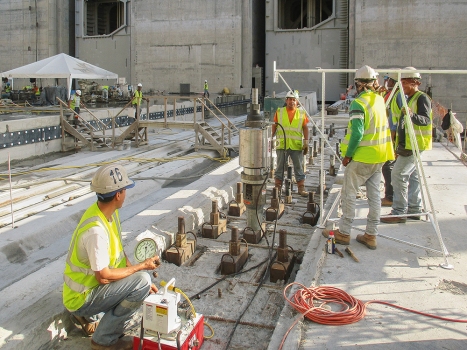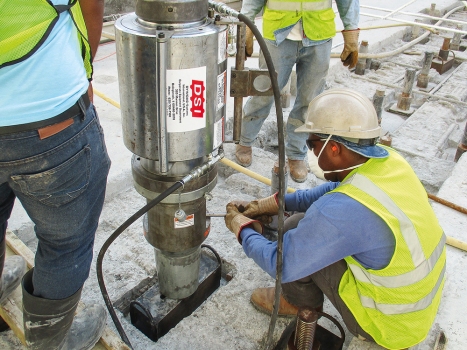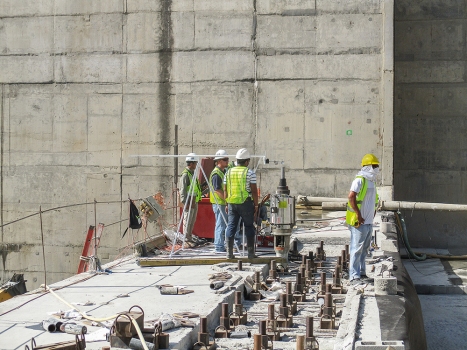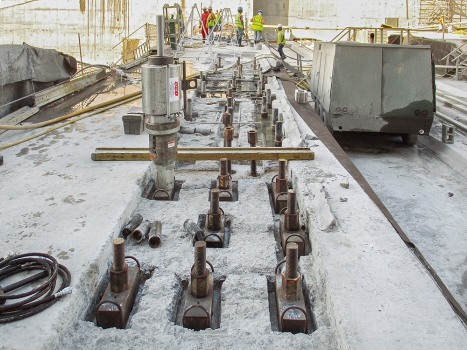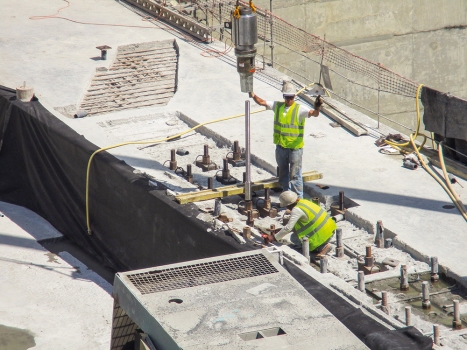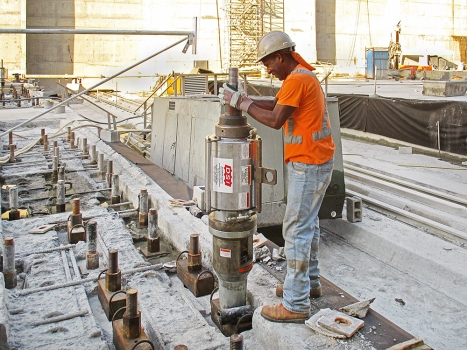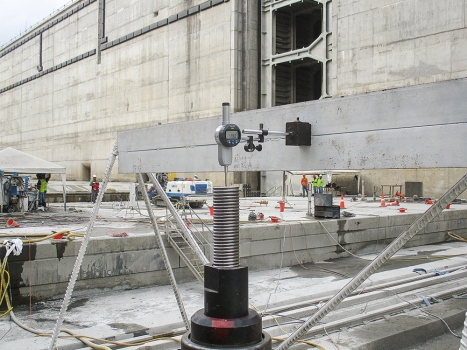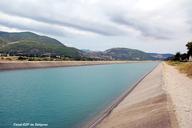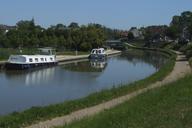Repair of sills in the Panama Canal
In 2007, the comprehensive expansion of the 80 km long Panama Canal that was opened in 1914 began. Thanks to the construction of a third, larger lock complex and a third waterway, the capacity of the canal that is used by 13,000 to 14,000 ships per year will be tripled. When the expansion is completed, ships with up to 12,000 containers on board will be able to use the navigation channel – currently, the canal only accommodates ships with a maximum of 4,500 containers.
Media
For the new locks on the Atlantic and Pacific sides, a total of 4.4 million m³ of concrete had to be poured. During the filling of the lock chamber for testing purposes and within the scope of some routine load tests, several cracks appeared at the new Cocoli Locks on the Pacific side.
The leaks appeared in the concrete sill of the inner bulkhead 3 that divides the middle chamber from the lower chamber of the Cocoli Lock Complex. The water filtered through across the width of the chamber near the top of the sill just below the rolling gate.
Steel reinforcement insufficient to resist water pressure
The reason for the leak was the fact that not all of the acting stresses had been considered in the original design so that, in some places, the steel reinforcement was insufficient to resist the water pressure.
Reinforcing three sills of Agua Clara Lock Complex
As a precaution, the General Contractor decided to also reinforce the three sills of the Agua Clara Lock Complex on the Atlantic side in addition to the three sills that divide the chambers in the Cocoli Lock Complex on the Pacific side using bar tendons.
For rehabilitation, the cracks in the sill of gate No. 3 were sealed using resin. Afterwards, bore holes were drilled into all sills into which horizontal and vertical tendons were installed for strengthening. These 180 tendons, each 66 mm Ø, were each 10.97 m long. The individual bar tendons were vertically installed into the sills using 1,000 spacers and were stressed afterwards. DSI also provided the four stressing jacks needed for post-tensioning and provided on-site technical assistance.

